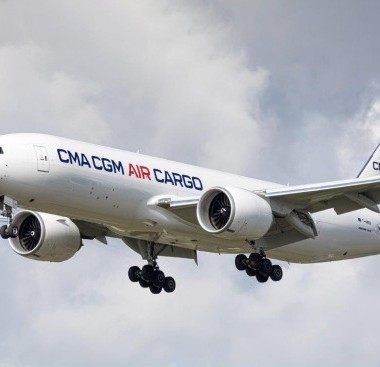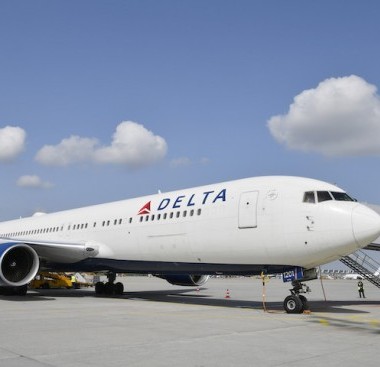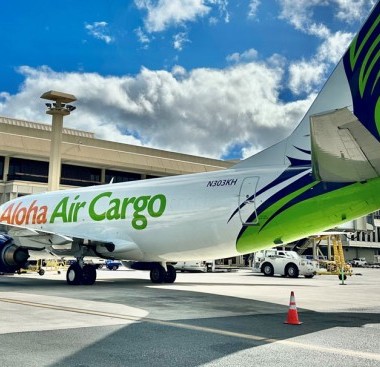The state of agricultural sea shipping
Jul 30, 2000
(Editor's note: The following is taken from a speech by Albert A. Pierce, Executive Director, Westbound Transpacific Stabilization Agreement (WTSA) before the Agriculture Ocean Transportation Coalition (AgOTC) Annual Meeting, San Francisco, July 21, 2000.)
This has been an especially active year in the westbound trans-Pacific trade, for carriers and for US agricultural exporters: rebound in the Asian economies and Asian consumer markets, our first full year under the new regulatory regime of OSRA, a dramatic expansion of service contracting, and considerable rate activity during the first half of 2000.
I think we can all breathe a sigh of relief that the Asian economic crisis is gradually receding into history. Looking at the first quarter 2000 cargo volume figures from PIERS, compared to first quarter 1999, we're seeing a very encouraging set of numbers:
Cotton, up from 56,000 metric tons in first quarter 1999 to 226,000 in the first three months of this year; refrigerated fruits and nuts, up from 275,000 metric tons to 345,000; animal feeds and supplements, up from 225,000 tons to 265,000; refrigerated vegetables, up from 193,000 tons to 206,000; hay, up to 576,000 metric tons this past quarter, from 563,000 in 1999 and 440,000 in 1998; hides, up to 156,000 tons from 152,000 last year and 130,000 in 1998. Refrigerated meat and poultry jumped from 352,000 tons in first quarter 1998, to 527,000 in 1999 and has stayed at roughly that level this year.
The main export growth markets at this point are Korea and China, but with solid gains posted throughout Southeast Asia and in Taiwan. One particular surprise is the relative strength shown in purchases of US ag exports by Japan, even though that market as a whole has not been doing very well. Certainly we expect a stronger yen to support continued US export growth by increasing Japan's buying power, assuming the trend holds.
USDA predicts that corn, wheat and cotton sales will bring on a steady year by year increase in US ag exports throughout this decade. Now that the US has permanent normal trade status with China, that could add $2 billion to our annual farm exports by the year 2005. USDA also points out that, while export volumes of some commodities like beef and pork may taper off slightly this year, prices continue to rise.
So, on the export side, most of the news coming out of Asia would appear to be positive. One big exception involves the recent trade sanctions against India and Pakistan, which hopefully will be temporary.
FARM EXPORTS TO ASIA
Of course, ocean carriers are thrilled to see this recovery in farm exports to Asia. Agricultural commodities are among the leaders in both the high-volume segment of our market, hay and forest products, for example, and in the high-value segment, with chilled meat, fruits and vegetables. Carriers are thrilled from a capacity utilization standpoint, from an equipment utilization and positioning standpoint, and from a revenue standpoint.
According to PIERS, the westbound liner trade grew 10% in first quarter 2000 over first quarter 1999. Where fewer than 40% of the containers returned to Asia in 1998-99 carried any cargo, gradually that situation is reversing. We are now at the point where over half of those boxes are returning full despite, I might add, the new services which entered the trade in the latter part of last year, principally to serve the eastbound market.
Demand growth has provided container lines with the momentum to undertake rate recovery this year, following a disastrous 18-month slide in westbound freight rates. Beginning in early 1998, plummeting demand in Asia and an urgent need to reposition equipment slashed westbound rates across the board by 40%.
Exporters claiming that $125-500 per feu increases taken this year threaten their export sales have short memories. They forget the sharp drop in wastepaper and hay rates, to below $200 per feu, for nearly a year. Apple rates down around $1,500. Frozen beef and pork rates at $1,800. All as lines have been under const
Similar Stories
Yellen fully expects fresh sanctions on Iran in coming days
US Treasury Secretary Janet Yellen warned that the US will strengthen its sanctions on Iran within days after the nation’s recent attack on Israel.
View Article

Biden seeks higher tariffs on Chinese steel, aluminum to support US firms
View Article

Cook says Apple considers making gadgets in Indonesia in pivot from China
View Article
Xi rebuffs Scholz pressure to rein in Chinese manufacturing
Chinese leader Xi Jinping told the German chancellor that a surge in clean-technology exports from the Asian nation has helped the world tackle inflation, pushing back against European and US…
View Article
Swiss Parliament rejects joining Russia sanctions task force
Switzerland’s parliament rejected a proposal for the government to join a US-led sanctions task force against Russia, saying cooperation with the body as an independent party is sufficient.
View Article
China’s exports to Russia slump amid US threat of war sanctions
China’s exports to Russia slumped in March, the first year-on-year decline since mid-2022, amid growing US threats of reprisal against Beijing if goods aid Moscow’s invasion of Ukraine.
View Article







